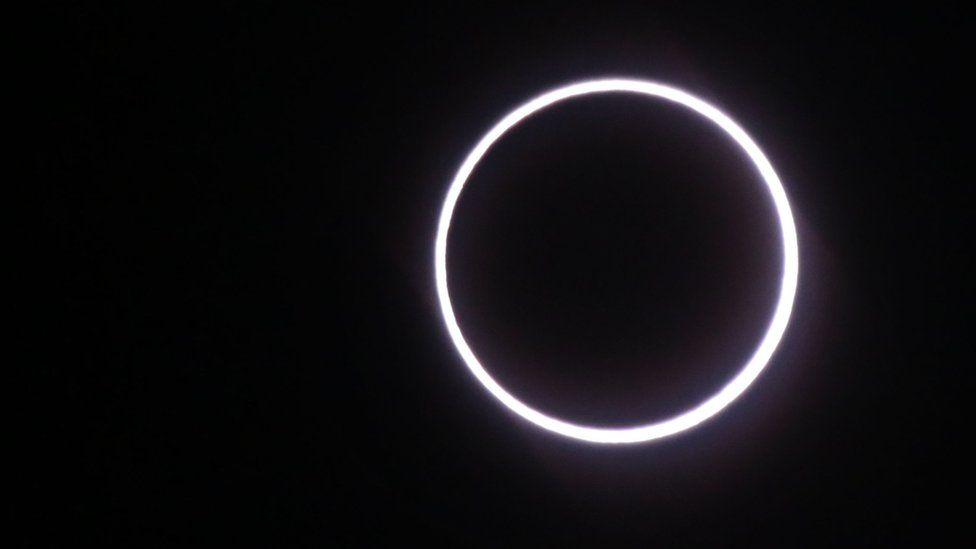Eclipse in Africa: 'Ring of Fire' eclipse wows stargazers
- Published

Stargazers in parts of Africa have been treated to a spectacular "ring of fire" in the sky as the sun was almost - but not completely - eclipsed.
An annular eclipse happens when the moon is farther away from the Earth than during a total eclipse.
The result is a bright circle of sunshine surrounding a dark, shadowy core.
The best views were seen in Tanzania, where the event lasted about three minutes.
The eclipse could also be viewed in parts of Gabon, Congo-Brazzaville, the Democratic Republic of Congo, Madagascar, and the French Indian Ocean island of La Reunion.
The moon does not move in a perfect circle around the earth - instead, its orbit is slightly elliptical. That means the distance of the moon varies between around 225,000-252,000 miles (362,000-405,555 km).
When the moon is farther away from the earth, it appears smaller - and does not totally cover the sun's disc during a total eclipse. The result is also known as a "ring of fire" eclipse.
The next eclipse is due to take place in February 2017, and can be seen from parts of South America and Africa.
- Published9 March 2016
- Published28 September 2015